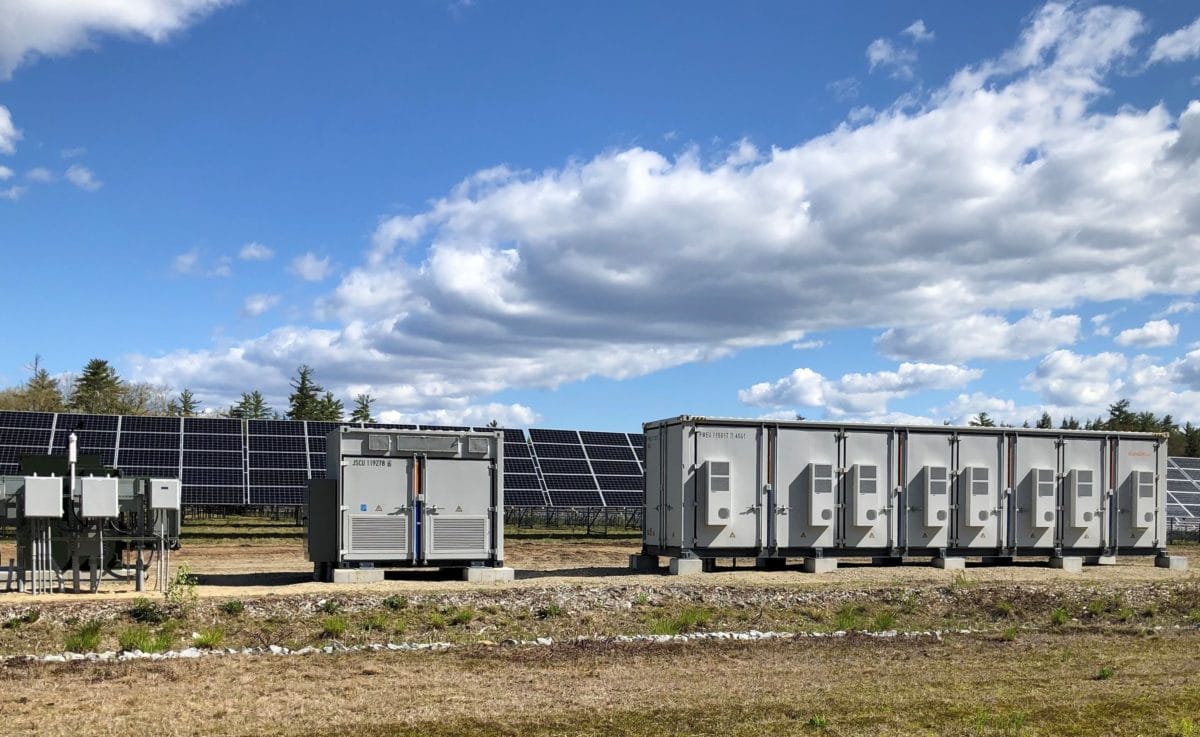New Hampshire Electric Cooperative said it finished work on its first utility scale energy storage project. The 2.45 MW battery project was developed in partnership with ENGIE North America.
ENGIE will own and operate the battery unit, which is located on the site of the co-op’s 2 MW solar array in central New Hampshire. The battery unit will charge from the cooperative’s distribution system during times of low demand and discharge during periods of peak regional electricity use.
The co-op may discharge the battery to supply energy to its members up to 70 times a year. It estimates these discharges will save its members $2.3 million over the next 12 years.
The battery storage unit can fully charge or discharge within two hours. The battery is housed in a pre-fabricated 40-foot container in Moultonborough, New Hampshire.
Goodyear solar array
Goodyear Tire & Rubber Co. and energy supplier Enovos said they will build two solar arrays at the tire maker’s testing facilities in Luxembourg.
The first will be a photovoltaic carport consisting of 1,500 solar panels, covering a parking lot of around 4,000 square meters. With an annual production of 657,500 kWh, the carport is expected to be completed in August. Plans for the second array are targeted for 2022.
When finished, both stations will produce around 5 GWh of electric power annually and reduce carbon emissions by around 50,000 tons for the next 20 years.Goodyear manufactures its products in 46 facilities in 21 countries around the world. Its two Innovation Centers are in Akron, Ohio, and Colmar-Berg, Luxembourg.
Upsized financing for portfolio buy
NextEra Energy Partners said it amended an existing convertible equity portfolio financing agreement with KKR to upsize it by $150 million. The additional capital will be used in part to fund the acquisition of a 400 MW portfolio of operating wind projects.
Under terms of the amended agreement, NextEra will receive an incremental $150 million as part of the second draw of the financing, which is expected to occur by the end of the second quarter. The second draw is expected to total around $500 million, bringing the total expected proceeds from the 10-year convertible equity portfolio financing agreement to roughly $1.25 billion.
Racking for Bahamas solar
Solar FlexRack said that its Fixed Tilt FlexRack Series G3-X racking product was used for Azimuth Energy’s 1.1 MW solar project on Highbourne Cay in the Bahamas. The project was designed to withstand up to 180 mph winds and includes a 2 MWh battery plant that enables all resort generators to be switched off for the first time in 50 years.
The project has a return on investment of five to six years due to diesel powerplant savings alone, the company said. In total, about two-thirds of the island’s diesel fuel island owners are expected to save more than $700,000 on operating expenses a year in addition to the significant non-financial benefits.
California budget revision
California’s revised state budget for 2021-22 includes money earmarked for zero emission vehicles, clean energy, and energy efficiency updates. Budget revisions that were released in mid-May expand zero emission investments to $3.2 billion over the next three years, and include proposed funding for clean transportation programs that will improve air quality by expanding zero-emission short-haul trucks, transit buses, and school buses. Funding also supports additional charging and fueling infrastructure.
The revision also includes $912 million ($905 million General Fund, $5 million reimbursements, and $2 million special funds) to accelerate California’s progress on meeting its clean energy goals and better position California as a leader in advancing clean technologies.
Major investments include:
• $35 million General Fund to carry out critical resource and transmission planning to support the clean energy buildout needed to meet the state’s energy and climate goals,
• $350 million General Fund to support pre-commercial long duration storage projects that are critical to the success of California’s efforts to decarbonize the electricity system,
• $250 million General Fund for energy efficiency in the industrial sector,
• $125 million General Fund in the Food Production Investment Program to reduce energy use at food production facilities,
• $20 million General Fund to spur environmentally responsible development of offshore wind energy, and
• $110 million General Fund in green hydrogen production to accelerate the transition away from using fossil fuels to produce hydrogen and to displace the use of gas at power plants.
This content is protected by copyright and may not be reused. If you want to cooperate with us and would like to reuse some of our content, please contact: editors@pv-magazine.com.









By submitting this form you agree to pv magazine using your data for the purposes of publishing your comment.
Your personal data will only be disclosed or otherwise transmitted to third parties for the purposes of spam filtering or if this is necessary for technical maintenance of the website. Any other transfer to third parties will not take place unless this is justified on the basis of applicable data protection regulations or if pv magazine is legally obliged to do so.
You may revoke this consent at any time with effect for the future, in which case your personal data will be deleted immediately. Otherwise, your data will be deleted if pv magazine has processed your request or the purpose of data storage is fulfilled.
Further information on data privacy can be found in our Data Protection Policy.